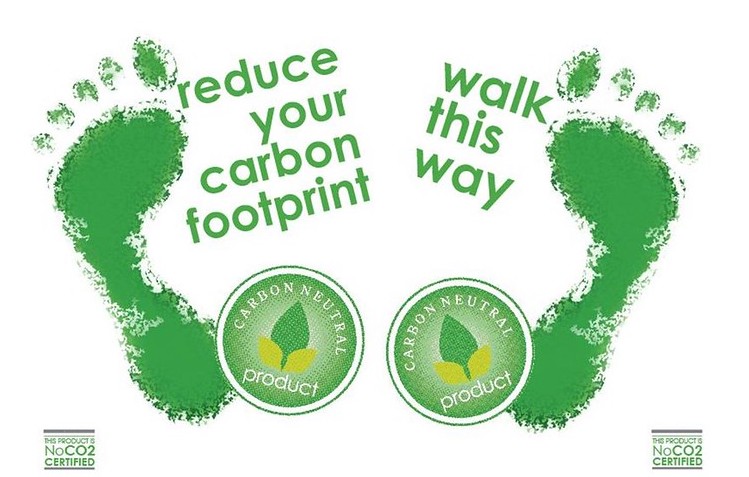
Net zero and carbon neutral are important terms to know for a business that is committed to reducing its carbon footprint to protect the planet and enhance their future business prospects.
But when making your business more sustainable, the terminology can be confusing. These phrases “carbon neutral” and “net zero” are heard a lot in climate conversations – but what’s the difference? And what’s the right goal for your company?
In this blog, we’ll look at both carbon neutral and net zero and how you can decide what is the right climate-related goal for your company.
Net Zero v Carbon Neutral
Carbon neutral definition
Carbon neutral means your company balances out its greenhouse gas (GHG) emissions with an equivalent amount of carbon offsets.
What are carbon offsets?
Offsets are projects that either reduce or remove carbon from the atmosphere. There are two types:
- Carbon reduction offsets – wind farms, green-energy projects or initiatives like cleaner cookstoves in developing countries. A traditional reduction offset prevents an action from taking place in the future by providing an alternative i.e. extracting fossil fuels.
- Carbon removal offsets – direct air capture technology. These new(ish) innovation advances take greenhouse gases (GHG) from the atmosphere and store them safely underground over a long period. These are incredibly cool but costly as we will see later
A company aiming for carbon neutrality would need to compensate for their emissions with traditional reduction offsets. No reduction needed. Just purchase enough carbon credits and you are there!
However, that’s the problem: it doesn’t motivate companies to stop their emissions in the first place. This satire video highlights the absurdity. The fake company “Cheat Neutral” allows cheating wives and husbands to clear their consciences by paying someone else to stay monogamous.
Carbon neutral won’t be enough to defeat climate change. To keep temperatures below the 1.5 degrees laid out in the Paris Agreement, we need to go further by aiming for net zero.
Net zero definition
Net zero means company’s activities from its value chain result in no net impact on the climate from GHG emissions. It requires companies and countries to reduce their emissions to zero or reduce their emissions close to zero and then remove an equivalent amount from the atmosphere.
Your company’s indirect emissions – things like your supplies and even employee commuting – are included when counting your emissions for a net-zero target.
Consider using science-based targets – an internationally-recognized blueprint on how to reach net zero – when setting goals. This standard requires you to:
- Set a road mad to cut emission to almost zero (across your entire value chain)
- Set near and long-term targets for rapid emission cuts
- Cut emissions by 90-95% by 2050 (for most companies)
Only when the above targets have been achieved can you offset the unavoidable emissions through carbon removal technology or reforestation. Note: these offsets should be scrutinised for quality and sustainability. How does the organisation you support operate? If you offset with reforestation carbon credits, how do you know the trees are protected against wild fires and deforestation?
Get started today by contacting one of our experts to assess your climate needs.
The world needs businesses and nations to commit to net zero to keep temperatures down and avoid the worst effects of climate change. Heat waves, floods, forest fires, and droughts will become the norm if we don’t act.
Here in the UK, the government has made a legal commitment to net zero by 2050. This means your business will be at risk from tightened climate-related legislation as policymakers aim to encourage more sustainable practices. On the flip side, you could flourish. Many companies are already taking advantage of fantastic tax reliefs and incentives to go green.
Is carbon neutral or net zero right for my company?
Net zero is an excellent goal for any company, but might only be achievable in the long term. It may not be possible to rapidly stop your emissions while working towards your business goals – finding sustainable alternatives could take time.
Remember; to reach net zero, a company will have to emit a very small amount of greenhouse gas emissions. They will need to buy removal offsets rather than reduction offsets and these are often 10 times more expensive, costing up to £100 per ton.
So, while aiming for net zero has many benefits for businesses – including increased resilience to market shocks and boosting your reputation with climate conscious customers – it’s a goal that could take years, or even decades, to achieve. Whereas aiming for carbon neutral is an action you can take now.
Where do I start?
The first step to becoming carbon neutral is to measure your business’s carbon footprint and identify activities that emit the most emissions.
Next, reduce these emissions where you can. Start with the worst culprits, the low-hanging fruit. Simple and effective changes include switching to a renewable energy supplier or insulating your offices. You can even get certified with PAS 2060 – the international standard for carbon neutrality.
Then, offset remaining emissions. To ensure your offsetting is effective, do your research and choose carefully. Donate to projects that have been independently verified by an organisation like the Gold Standard or Verified Carbon Standard.
Carbon neutrality might not be the end goal, but taking action now will lead you towards the path to net zero. And, we guarantee your business will be better off in the short and long term.
By Molly Millar – Sustainability Writer



